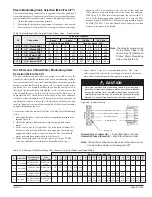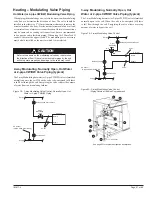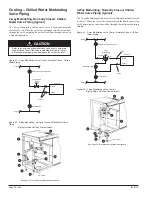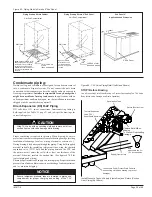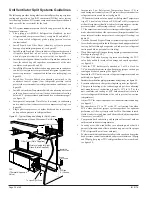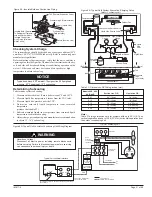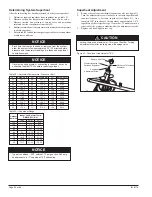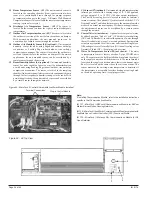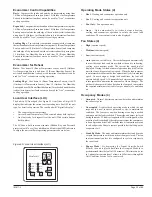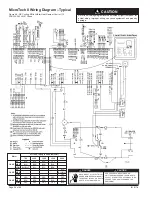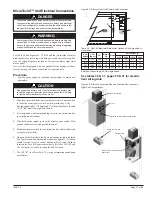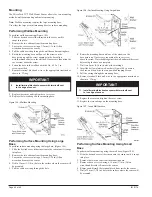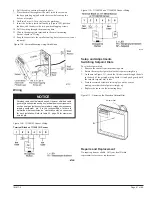
Page 26 of 60
IM 817-4
Typical Steam Coil Piping
Figure 76 - Face and Bypass With 2-way End-of-Cycle Valve - Same
End Drain Connection (Piping Within Unit End Compartment)
Figure 77 - Face and Bypass With 2-way End-of-Cycle Valve - Same
End Drain Connection (Piping Outside Unit End Compartment)
13
14
4
6
7
15
9
15
15
Figure 74 - 2-Way Steam Modulating Valve Control - Same End Drain
Connection (Piping Within Unit End Compartment)
14
4
8
6
7
13
15
11
In Steam Systems:
The optional factory-supplied Daikin MicroTech
II™ Modulating
Control Valve
for steam applications is the 2-way type. It is shipped
separately from the unit ventilator to help avoid shipping damage,
yet provide the installer with maximum flexibility in making the field
piping connection. Before proceeding, see Figures 72 through 77, as
well as the job-specific piping drawings.
For steam applications, the 2-way, angle pattern valve furnished is
normally piped open to the coil. All steam coils are 1-1/8" (34mm)
female sweat connections. Coil connections terminate 9" (229mm)
from the end of the unit.
Steam coils have a factory-installed pressure equalizing valve and a
24" (610mm) long pressure equalizing line that terminates in a 1/2"
M.P.T. fitting.
Steam connections may be same end as cooling coil connections, but
are recommended to be opposite end to facilitate piping. When using
MicroTech II controls, they must be opposite end.
See Figures 73 through 77. Connect the 1/4" (6.35mm) vacuum breaker
tube to the downstream return line. Make this connection downstream
of the trap outlet.
Figure 75 - Opposite End Drain Connection – (78/79 Coils)
Left End View
Right End View
Left Hand Steam Supply and Right Hand Steam Return (Shown)
1⁄4" Flare By 1⁄2" MPT
Half-Union and 1⁄4" Flare
(by Daikin)
Steam Trap
(by Others)
Vacuum
Breaker Tube
(by Daikin)
Control Valve: Install On
Center Coil Connection
Steam Supply
Steam Return
Drain Line
(by Daikin)
Vacuum
Breaker Tube
(by Daikin)
Tee
(by Others)
Vacuum Breaker
(by Daikin)
See page 25 for number designation descriptions.
See page 25 for number designation descriptions.
See page 25 for number designation descriptions.
14
13
4
6
7
8
15
9












